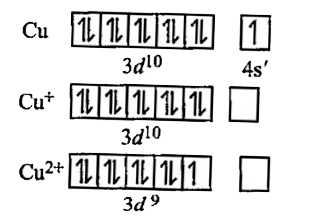Text Solution
Verified by Experts
|
Topper's Solved these Questions
BIOMOLECULES
ACCURATE PUBLICATION|Exercise 2 MARK QUESTIONS |29 VideosView PlaylistBOARD PAPER MARCH - 2020
ACCURATE PUBLICATION|Exercise SECTION - D|18 VideosView Playlist
Similar Questions
Explore conceptually related problems
Knowledge Check
A
B
C
D
Submit
Similar Questions
Explore conceptually related problems
ACCURATE PUBLICATION-BOARD PAPER MARCH - 2019-QUESTIONS
- Write the IUPAC name of following : [Cr(NH3)3 (H2O)3]Cl3
03:28
|
Play - A compound X and Y crystallises in the cubic structure in which Y atom...
03:03
|
Play - Why Cu(l) is colourless and Cu(ll) is blue in colour ?
01:49
|
Playing Now - The rate constant for a first order reaction Is 90 s^-1 .How much time...
04:13
|
Play - Define ore and minerals.
03:38
|
Play - Give monomers name and preparation of Nylon 6,6.
03:50
|
Play - All three classes of aliphatic amines are stronger bases tha ammonia. ...
03:06
|
Play - Write chemical name, deficiency disease and one source of vitamin-C.
02:36
|
Play - 18 g of glucose is dissolved in 1 kg of water. At what temperature wil...
05:27
|
Play - State Henry's law and mention its some important applications.
05:09
|
Play - Why bond angle of Phosphine (PH3) is less than Ammonia (NH3) ?
03:25
|
Play - Why is H2S less acidic than H2 Te ?
03:23
|
Play - The molar conductivities at infinite dilution for sodium acetate, hydr...
03:09
|
Play - What is corrosion?
03:08
|
Play - Calculate the molar conductance of solutions of MgCl2 at infinite dil...
04:45
|
Play - (i) Give two differences between emf and potential difference. (ii) ...
06:58
|
Play - Explain Reimer Tiemann reaction with one example.
04:32
|
Play - How will you convert chlorobenzene into phenol ?
01:51
|
Play - Why Phenols are more acidic than Alcohol ?
06:01
|
Play - Write two differences between physical adsorption and chemical adsorpt...
05:00
|
Play
